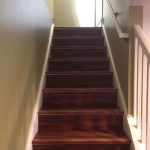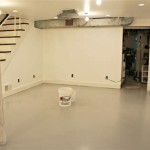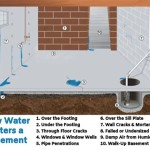What Should Humidity In Basement Be?
The ideal humidity level in a basement can vary depending on the specific conditions and materials used in the space. However, generally speaking, a relative humidity level between 30% and 50% is recommended to prevent moisture-related problems such as mold, mildew, and wood rot. Higher humidity levels can encourage the growth of mold and mildew, which can cause respiratory problems and damage to stored items. Lower humidity levels can cause wood to dry out and become brittle, leading to cracking and warping.
Factors That Affect Basement Humidity
Several factors can affect the humidity level in a basement, including:
- Outside humidity: The humidity level outdoors can significantly impact basement humidity, particularly during humid weather.
- Water leaks: Leaks from pipes, foundation cracks, or groundwater seepage can add moisture to the air.
- Poor ventilation: Basements often have limited ventilation, which can trap moisture and increase humidity levels.
- Moisture-producing activities: Activities such as laundry, drying clothes, and using humidifiers can release moisture into the air.
Consequences of High Basement Humidity
High humidity in the basement can lead to several problems, including:
- Mold and mildew growth: Mold and mildew thrive in humid environments and can cause respiratory problems, allergic reactions, and damage to stored items.
- Wood rot: High humidity can cause wood to rot, leading to structural damage and affecting the integrity of furniture and other wooden items.
- Musty odors: Excess moisture can create a musty odor in the basement.
- Increased risk of pests: Some pests, such as cockroaches and silverfish, are attracted to humid environments.
Consequences of Low Basement Humidity
While high humidity can be problematic, extremely low humidity levels in a basement can also cause issues, such as:
- Dry and cracked wood: Low humidity can cause wood to dry out and crack, affecting the integrity of wooden structures and furniture.
- Static electricity: Dry air can increase the likelihood of static electricity, which can be uncomfortable and damage electronic devices.
- Respiratory irritation: Excessively dry air can irritate the throat and nasal passages, leading to discomfort and health issues.
Controlling Basement Humidity
Maintaining the ideal humidity level in a basement requires controlling moisture sources and improving ventilation. Here are some strategies to consider:
- Address water leaks: Repair any leaks promptly to prevent water from entering the basement and contributing to humidity.
- Improve ventilation: Install vents or fans to increase air circulation and reduce moisture buildup.
- Use a dehumidifier: A dehumidifier can remove excess moisture from the air, especially during humid seasons.
- Limit moisture-producing activities: Avoid activities that release a significant amount of moisture into the basement, such as drying clothes indoors.
- Install a vapor barrier: A vapor barrier on the basement walls and floor can prevent moisture from entering the space.
If you experience persistent humidity problems in your basement despite implementing these measures, it is advisable to consult with a professional to determine the underlying causes and develop a customized solution.

How To Achieve An Ideal Basement Humidity Of 30 50

How To Lower Your Basement S Humidity Level

How To Achieve An Ideal Basement Humidity Of 30 50

Moisture In Basements Causes And Solutions Umn Extension

How To Achieve An Ideal Basement Humidity Of 30 50

Overview Dehumidification In The Basement Or Crawl Space

Relative Humidity Why You Need To Understand It News And Events For Basement Systems Inc

Moisture In Basements Causes And Solutions Umn Extension

6 Causes Of Basement Moisture How To Fix Them

When High Humidity In Your Basement Is A Problem
See Also








